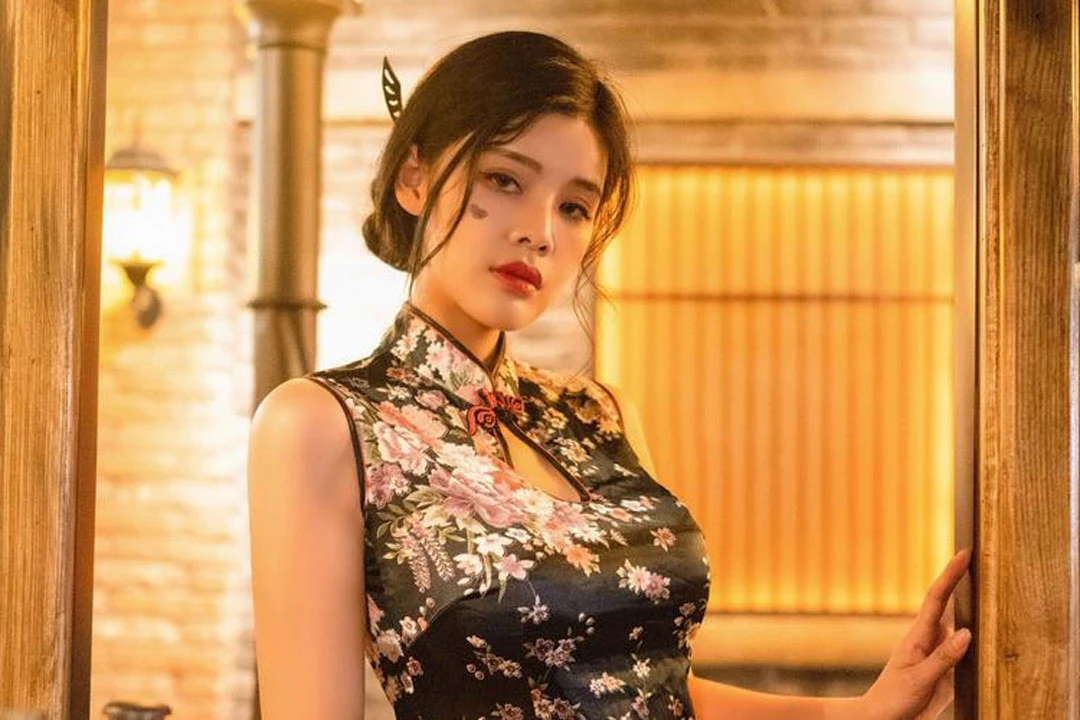The Qipao, also known as the cheongsam, is a quintessential symbol of Chinese culture, renowned for its elegant silhouette and intricate designs. As this traditional attire gains global popularity, questions arise about cultural appropriation, etiquette, and the inclusivity of its wear. In this exploration, we delve into the nuanced discussions surrounding the Qipao, addressing whether it’s appropriate for individuals outside Chinese culture, particularly focusing on the queries: Can a white girl wear a cheongsam? Is it okay for foreigners to wear a qipao? Is it appropriate to wear a qipao? Do you have to be Chinese to wear a qipao?
1. The Qipao: A Cultural Icon Beyond Borders
Origins and Evolution
The Qipao, with its roots dating back to the 17th century Ming Dynasty, has undergone a fascinating evolution. Initially worn by the Manchu ethnic group, it later transformed into the Qipao we recognize today during the 1920s and 1930s in Shanghai, blending traditional Chinese elements with modern aesthetics.
Symbolism and Elegance
Beyond its aesthetic appeal, the Qipao holds cultural significance. Its form-fitting silhouette and high neck symbolize modesty and grace, while the intricate patterns and fabrics convey a deep appreciation for Chinese craftsmanship.

2. Can a White Girl Wear a Cheongsam?
It’s totally ok. The line between appreciation and appropriation is often debated. While appreciation involves understanding and respecting the cultural context, appropriation implies taking elements out of context, potentially perpetuating stereotypes. The global embrace of the Qipao can be seen as a positive aspect of cultural exchange. When individuals from different backgrounds wear the Qipao with a genuine interest in and understanding of its cultural significance, it fosters appreciation and cross-cultural understanding.
Intent Matters
The key factor in determining whether it’s appropriate for a white girl, or anyone, to wear a cheongsam lies in their intent. If the wearer approaches it with respect, awareness, and a desire to celebrate Chinese culture, it can be seen as a positive gesture of cross-cultural appreciation.
3. Is It Okay for Foreigners to Wear a Qipao
As the Qipao holds cultural significance, it’s crucial for foreigners to approach its wear with cultural sensitivity. Being aware of the historical and symbolic aspects of the attire demonstrates respect for its roots. Events promoting cultural exchange, such as international festivals or themed gatherings, can provide suitable contexts for foreigners to wear the Qipao. These platforms encourage dialogue and understanding while celebrating diversity.
Collaboration with Chinese Designers
Collaborating with Chinese designers and artisans can further ensure that the Qipao is worn in a manner that respects its cultural origins. This approach not only promotes cross-cultural collaboration but also supports the craftsmanship tied to the attire.
4. Is It Appropriate to Wear a Modern Qipao?
The appropriateness of wearing a modern qipao often depends on the occasion and context. While it can be suitable for cultural events, celebrations, or formal gatherings, wearing it casually without understanding its cultural significance might be perceived differently.
Personal Connection to Chinese Culture
Individuals who have a personal connection to Chinese culture, such as through marriage, friendships, or genuine interest, may find that wearing a Qipao becomes more appropriate as it reflects a deeper understanding and appreciation.
Understanding Dress Codes
In certain settings, such as Chinese weddings or traditional ceremonies, wearing a Qipao might be expected or encouraged. Understanding specific dress codes for events helps ensure appropriateness and cultural respect.
5. Do You Have to Be Chinese to Wear a Qipao?
Cultural Appreciation Knows No Boundaries
The beauty of cultural appreciation is that it transcends ethnic boundaries. While understanding the cultural context enriches the experience, one doesn’t necessarily have to be Chinese to wear a Qipao.
Global Diversity and Shared Heritage
In our interconnected world, celebrating and sharing aspects of cultural heritage is a testament to global diversity. Wearing a Qipao can be a way for individuals from various backgrounds to engage with and appreciate Chinese culture.
Promoting Inclusivity
Encouraging inclusivity in the appreciation of cultural attire fosters a sense of shared heritage. As long as wearers approach it with respect and awareness, the Qipao can become a symbol of unity rather than exclusivity.
Conclusion
The Qipao, with its rich history and intricate symbolism, is a garment that transcends borders. The question of whether a white girl, or anyone outside Chinese culture, can wear a cheongsam is a nuanced conversation that revolves around appreciation, understanding, and intent. As the world becomes more interconnected, the embrace of cultural attire like the Qipao serves as a bridge for cross-cultural understanding and celebration. The key lies in approaching the wear with respect, awareness, and a genuine desire to engage with and appreciate the cultural heritage it represents. Ultimately, the Qipao becomes a canvas upon which the diverse threads of global cultures can weave a tapestry of shared appreciation and understanding.

